Barcelona hosted Valencia at the Camp Nou for a clash that almost never leaves the fans disappointed. Usually, the Catalans know how to manage games against Los Che, especially considering that Ernesto Valverde has never lost a game against them at home with four wins and five draws so far to his name.
What they probably did not count on was that they would be chasing the result for a good part of the game. In the end, they shared the spoils with two goals apiece. As our analysis has pointed out before, Barcelona have been really impressive at overturning deficits, even when the odds have not been in their favor.
In this tactical analysis, we will use statistics to explain what transpired in Catalunya and how two of La Liga’s big fish secured an important point in an everlasting struggle that is the Spanish top flight.
Lineups
Barcelona (4-3-3)
Starting XI: Ter Stegen – Semedo, Pique, Vermaelen, Sergi – Vidal, Rakitić, Aleña – Messi, Suarez, Coutinho
Bench: Iñaki Peña, Lenglet, Murillo, Alba, Arthur, Boateng, Malcom
Coach: Ernesto Valverde
Valencia (4-4-2)
Starting XI: Neto – Piccini, Garay, Paulista, Lato – Wass, Coquelin, Parejo, Cheryshev – Rodrigo, Gameiro
Bench: Doménech, Roncaglia, Soler, Torres, Kondogbia, Lee Kang-In, Santi Mina
Coach: Marcelino Garcia Toral
Barcelona – Valencia Live Score

Barcelona’s setup
Having returned from a rather difficult tie against Sevilla in the Copa del Rey just a couple of nights before, Ernesto Valverde knew that his troops would not necessarily be running on a full tank. With those thoughts on his mind, he elected to slightly rotate the team, for better or worse.
Jordi Alba was the biggest surprise omission from the lineup as the Spaniard was rested. Nelson Semedo took his place in the lineup, with Sergi Roberto switching across to left-back. The Ant also introduced the young Carles Alena into the mix, leaving Sergio Busquets on the sideline, and putting Ivan Rakitić into that pivot role.
Arthur was also rested while Arturo Vidal got to start the game, while ex-Arsenal defender Thomas Vermaelen made the centre-back pairing with birthday boy Gerard Pique. In the rest of the positions, it was business as usual as the Catalans opted for their default 4-3-3 formation in front of their home crowd.
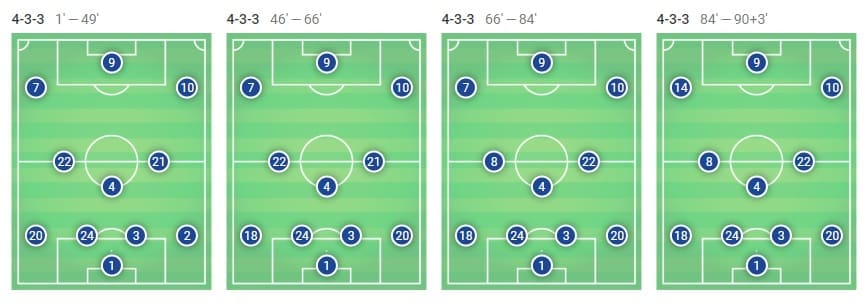
Valencia’s setup
Things were not so different on the other side of the pitch. Valencia and Marcelino had had a difficult Copa del Rey test to attend to, which they passed with flying colours. Just like Barcelona they reached the semi-finals, and were looking to continue their rise in the league.
Still, there were a couple of changes noted since their last La Liga match against Villarreal. Neto continued his outstanding campaign between the sticks, while the back four was slightly different. Ezequiel Garay and Cristiano Piccini were still on the pitch but the other side of the four-man defence was altered with the introduction of Toni Lato and Gabriel Paulista.
Wass for Soler was the only change in the midfield while Kevin Gameiro got the nod in front of Santi Mina and made a tandem up front with Rodrigo. The team operated in an all-too familiar 4-4-2 system throughout the whole game.
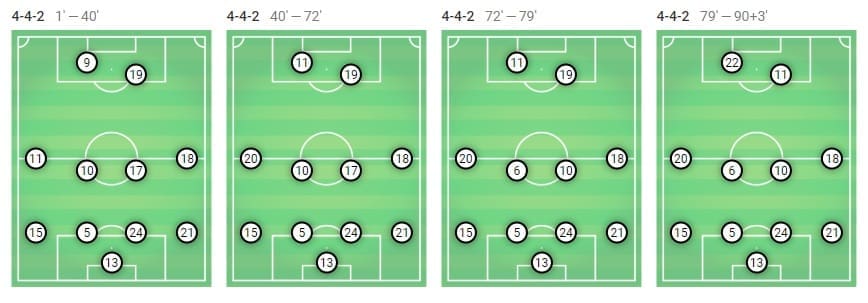
Early shocks
Not many teams can expect to travel to the Camp Nou and surprise the hosts with a couple of goals in the opening stages of the game. However, Marcelino did his homework by studying Barcelona and preparing well for the encounter. The name of his game was a combination of quick transitions and exceptional counterattacking prowess, both of which worked extremely well against a slow-reacting Catalan side.
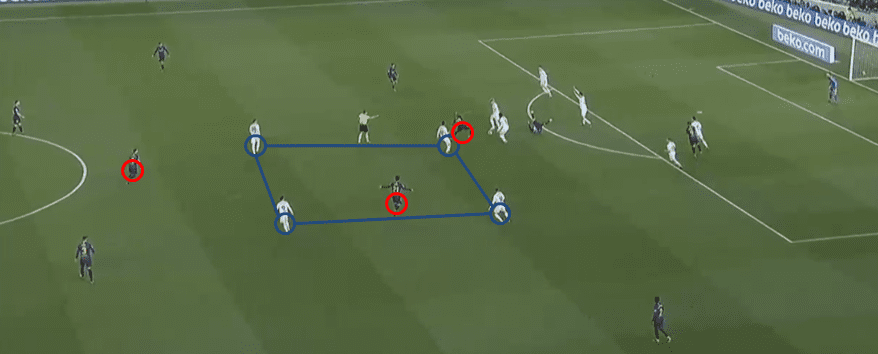
With Ivan Rakitić slotting in between the centre-backs and both Alena and Vidal being higher up the pitch, there was a hole between defence and attack. Valencia use this to create quick transitions mostly undisturbed. Also, by outnumbering the opposition they made sure to have options when switching from soaking up pressure to starting counter-attacks.
When Barcelona were in possession, Valencia would mostly deploy two well-structured and fairly stretched banks of four to soak up all and any pressure the Catalan side threw at them. Still, knowing that both Sergio Roberto and Nelson Semedo would be deployed extremely high due to Barcelona’s lack of a true natural winger, Marcelino opted to leave the strikers fairly close to the middle of the park and relatively within reach of the midfield four.
As a result, which can be seen in the image above, in case of retained possession, Valencia always had options for a swift counter-attack. This was mostly made possible by smooth transitions between defending and attacking, but also by exploiting loads of free space left by Barcelona’s own midfielders.
Notice how Rakitić, once again, in the absence of Sergio Busquets, drops in between the two centre-backs. With both Vidal and Alena higher up the pitch, there is suddenly a hole between them and the rest of the team. That space is used to perfection as the quick legs of the away team get them in front of Marc-Andre ter Stegen in mere seconds.
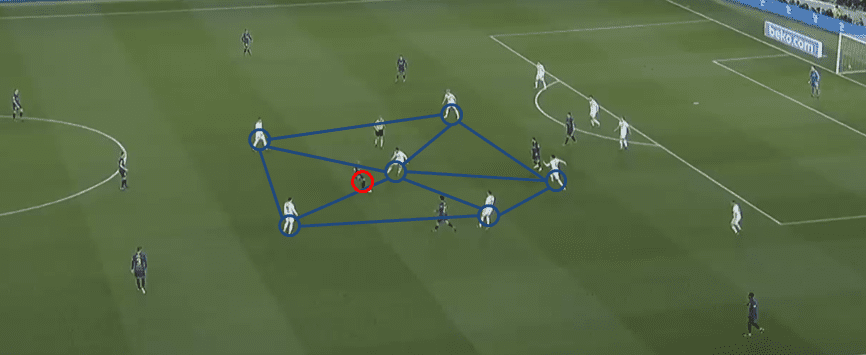
Another thing we have to mention here is Valencia’s compact block itself. Barcelona having two aggressive midfielders in Alena and Vidal played right into the visitors’ hands. In order to disrupt the free flow of the hosts’ build-up, Marcelino decided to overload the midfield and make sure to always have the numerical advantage, as can be seen above.
Just seconds later, the ball was taken away from Lionel Messi and the goal-scoring counter was set into motion. Barcelona’s first weakness was exploited well, but it was not the end of Valencia’s assault.
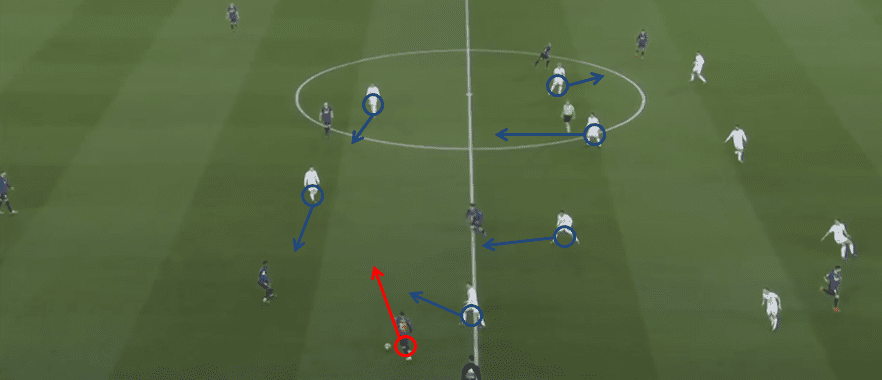
See how all passing options are blocked by great man-marking. When Messi tries to send a ball through the block, it gets intercepted and eventually, a lethal counter starts on the other side of the pitch.
Know your enemy
The first goal was clear proof that Marcelino knew what he was doing and that everything was unfolding largely as planned for his team. He knew that by cutting off the midfielders and exploiting a tight block with a numerical advantage would allow him quick transitions to hurt the opposition which is slow in their defensive ones.
He also knew that if there was one side to attack with blistering pace, it was the one where Sergi Roberto operated. In this particular case, that meant Barcelona’s left flank. An overwhelming 65% of all counters came from that side with an xG of 0.81. Their preference of wings was also highly notable as none of the counters were made through the middle, with one made down the left flank.

It’s also worth noting that most of their best goalscoring opportunities came directly from that side, with Dani Parejo being the standout name on the list.
Barcelona dominated possession as we are used to seeing time and time again. When they took their time, and when they weren’t chasing the result, the Catalans would play the waiting game.
The slow build-up all the way from the back invited some pressure from Valencia, who would, only at times, risk dismantling their structure in order to provoke mistakes from the hosts. Pushing forward and pinning the ball carriers with numbers meant that Barca had to opt for quickly switching sides and neutralising the pressure safely.
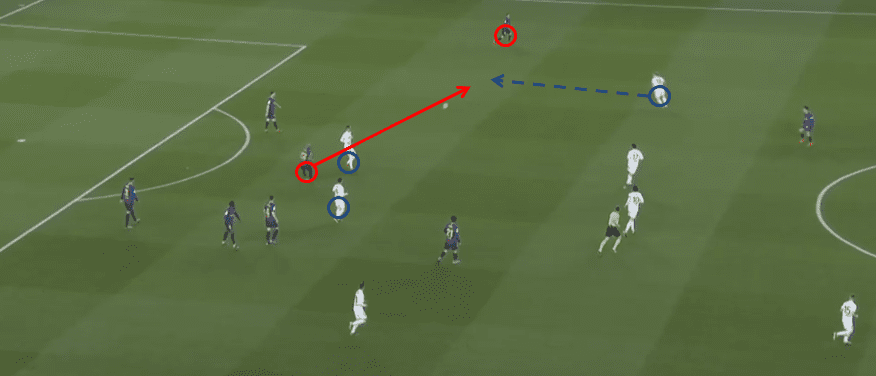
Without either Sergio Busquets or Arthur Melo on the field, this task was easier said than done. Note in the image above how by pressurising Vidal and putting numbers up front led to an easy interception as Barcelona were caught in transition once again.
This was also not an isolated case, either. Valencia made 48 interceptions on the night and a total of 62 recoveries with 100% of their counterattacks ending with a shot (4/4). Most would start with a simple stolen ball, and a then a long pass to quickly set up play.
Sixty long balls compared to 40 of Barcelona are already telling enough, but given the minimal time they had on the ball (34.4%), theirs were effective in creating goalscoring opportunities. Taking into consideration their part of the total possession, Valencia were creating more chances than expected.
The second goal to put the visitors two up actually started on the right side. A combination of Sergi Roberto’s failure to mark his man properly and a lapse in concentration from Thomas Vermaelen yielded Valencia a penalty kick.
Individual brilliance saves a point for Barcelona
Since there was no Ousmane Dembele or no Jordi Alba for Barcelona, Marcelino was able to deploy a really stretched out back line because there were no pacy wingers who could truly exploit that weakness. This also meant that Barca had to go through the middle to reach the final third and find Neto.
That, however, was constantly made more difficult due to their inability to find a man between the lines, which kept happening because of the numerical disadvantage and reduction of space by Valencia.
One thing the Catalans did have on their side was individual prowess. Once again it was Lionel Messi who secured a point for his team, scoring a brace in order to do so. The Argentine was struggling to successfully play his game and actually lost the ball on a total of 15 occasions.
Still, one penalty kick and one brilliantly masked long shot revitalised Messi and his team, making sure they would share the spoils with their guests.
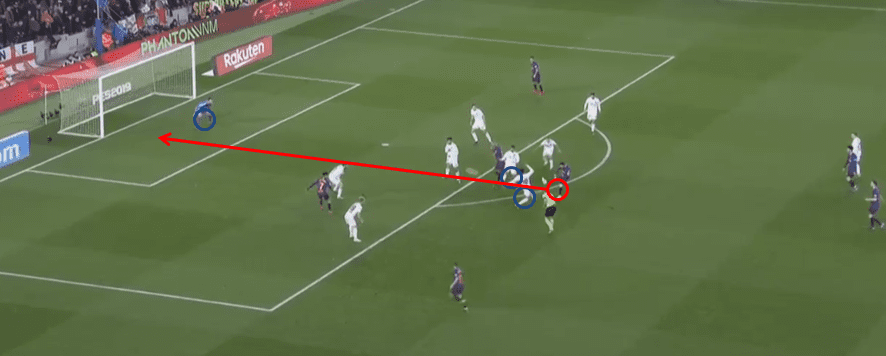
Note how Messi uses the two defenders to obstruct Neto’s line of sight, making him unable to react to the shot heading his way. The man between the sticks, thus far the hero having saved eight shots in total, was left rooted to the spot and helpless. You cannot save that which you cannot see.
Even though Barcelona had Messi, Valencia actually boasted the man of the match in the shape of Dani Parejo. With one goal, two key passes and an overwhelming 96% accurate passes overall to his name, Parejo definitely ran the game on his own.
Perhaps his biggest contribution however came in the stolen balls and interceptions he made throughout the match, integral as they were to Marcelino’s game plan. Six interceptions, 6/7 duels won, seven recoveries and a 100% tackle rate meant that Valencia’s key puzzle piece was firing on all cylinders.
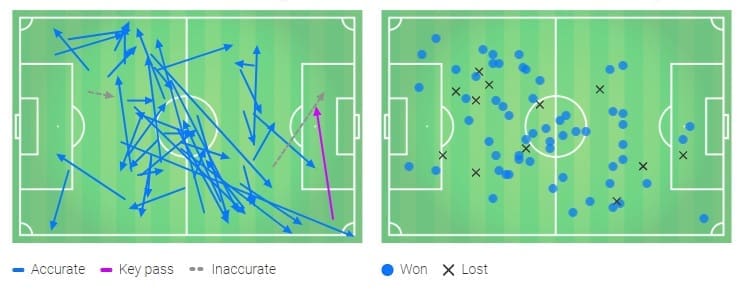
Conclusion
It was fairly risky to deploy such an approach by Ernesto Valverde, knowing that he had to face what is possibly the best counterattacking team in La Liga this season. The unstable possession game which was mostly caused by a disjointed midfield and a cut-off attacking trident yielded lots of loose balls for Valencia to fully exploit, which they did.
Luckily for the Catalans, the team breathing at their necks in the table – Atletico Madrid – failed to capitalise on their rival’s lapses with their defeat to Real Betis. Diego Simeone’s troops now trail six points behind Barcelona instead of closing the gap down to only three.
The title race is, however, still pretty much alive and kicking. It will be interesting to see how the other half of the season unfolds, taking into consideration that February, with its hectic schedule, may very well be the breaking point.
If you love tactical analysis, then you’ll love the digital magazines from totalfootballanalysis.com – a guaranteed 100+ pages of pure tactical analysis covering topics from the Premier League, Serie A, La Liga, Bundesliga and many, many more. Buy your copy of the January issue for just ₤4.99 here, or even better sign up for a ₤50 annual membership (12 monthly issues plus the annual review) right here.

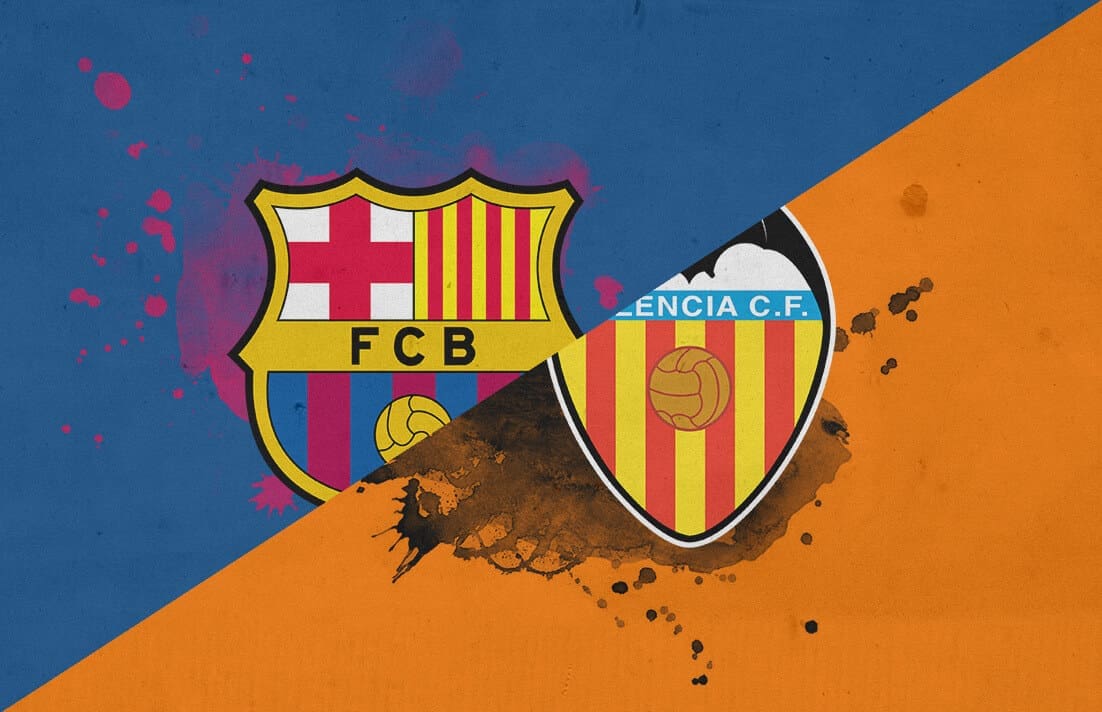



Comments